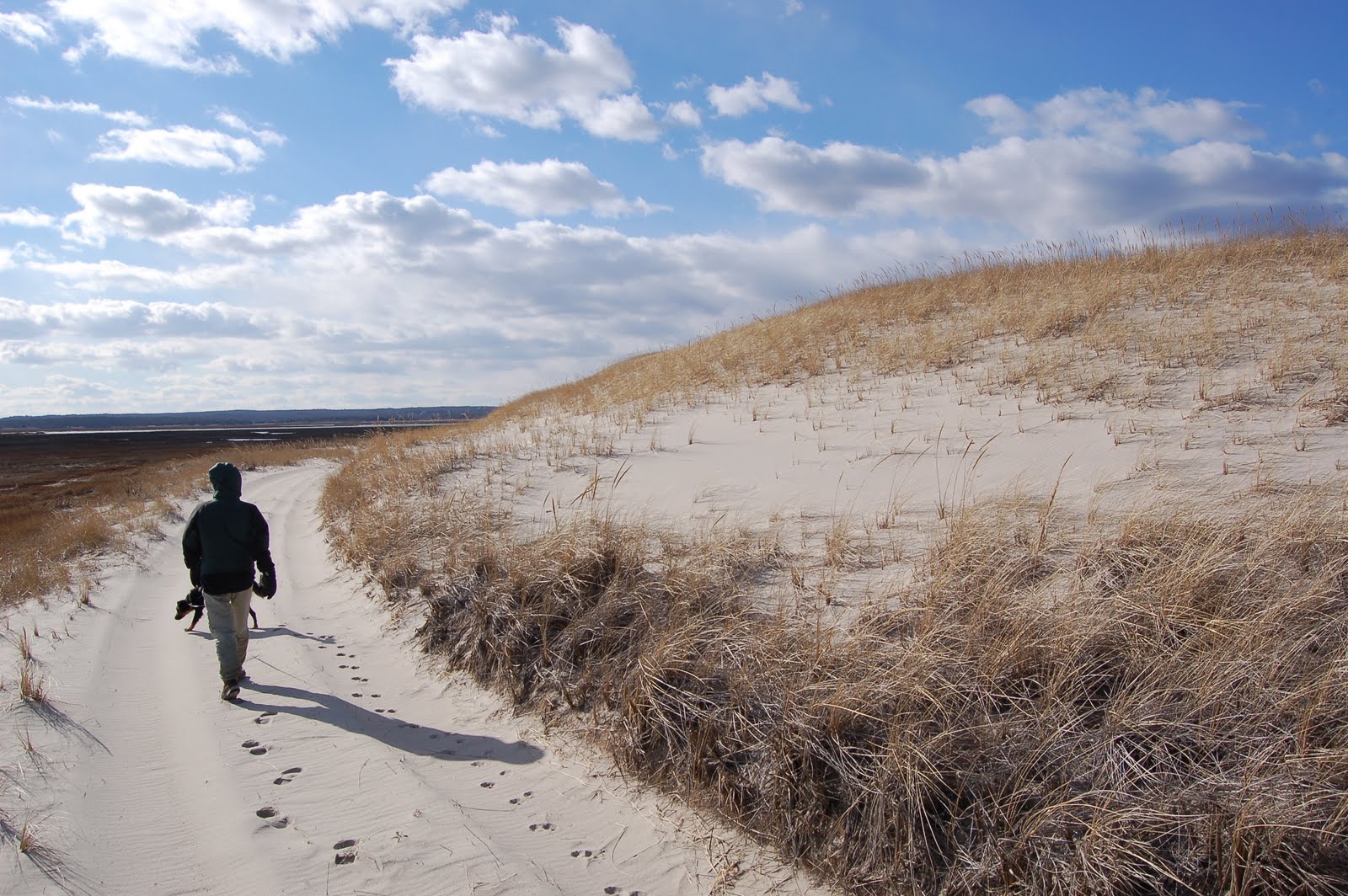
On Thursday, May 27 at 7 p.m., I’ll be giving a slide show and presentation at REI in Reading, Mass., to highlight favorite trips and photos from my guidebook AMC’s Best Backpacking Trips in New England. (Here’s the REI listing for the show.) In the meantime, I wanted to share some of my favorite early-season backpacking trips for those eager to hit the trails.
 Sandy Neck
Sandy Neck
Barnstable, Cape Cod, Mass.
A six-mile-long spit of dunes lines the south shore of Cape Cod Bay. A broad sandy beach stretches along the northern margin of the 1,500-acre peninsula. Beach grass and twisted pitch pines nestle inland between rolling swales of sand, separated from the mainland by a large saltwater marsh. And a small backcountry camping area nestles in the middle of it all.
This is a great destination before Memorial Day hits to launch summer madness, when crowds and RVs line the long stretch of beach. 7.9 miles round-trip to the camping area. Sites are $20 and first-come, first-serve. For more, check out the official Sandy Neck web site.
 The Taconics
The Taconics
Appalachian Trail, Northwest Connecticut, Southwest Massachusetts
The AT travels atop the ancient bedrock prow of the Taconic Range for nearly 17 miles without crossing a single road. Touring a broad swath of wildland in a far corner of New England, the hike visits the highest peak in Connecticut (Bear Mountain), the second-highest in Massachusetts (Mount Everett), old-growth hemlock forest, bonsai’d pitch pines, waterfalls, and nine different places to spend the night.
This 16.9-mile, point-to-point journey is one of my all-time New England favorites. The underlying geology creates some unusual, and unusually diverse, ecosystems. The number of overnight camping options is excellent. And there are great views along the way. Begin the hike where the AT crosses Route 41 in northwest Connecticut, ending at Jug End Road in Massachusetts.
 Connecticut State Forests
Connecticut State Forests
Statewide
Did you know that Connecticut offers nine backpacking shelters and seven designated backcountry camping areas? Check out this backpacking overview map, which shows their locations. Based on my experience, they can be surprisingly hard to find—yet remarkably pleasant, secluded, and little-used. They do require some advance planning (you have to request a permit by mail) but can be well worth the effort.
I’m partial to Tunxis and Pachaug State Forests, which both offer remote overnight spots. Learn more about them all at the DEP’s Backpack Camping page.
Happy Trails!